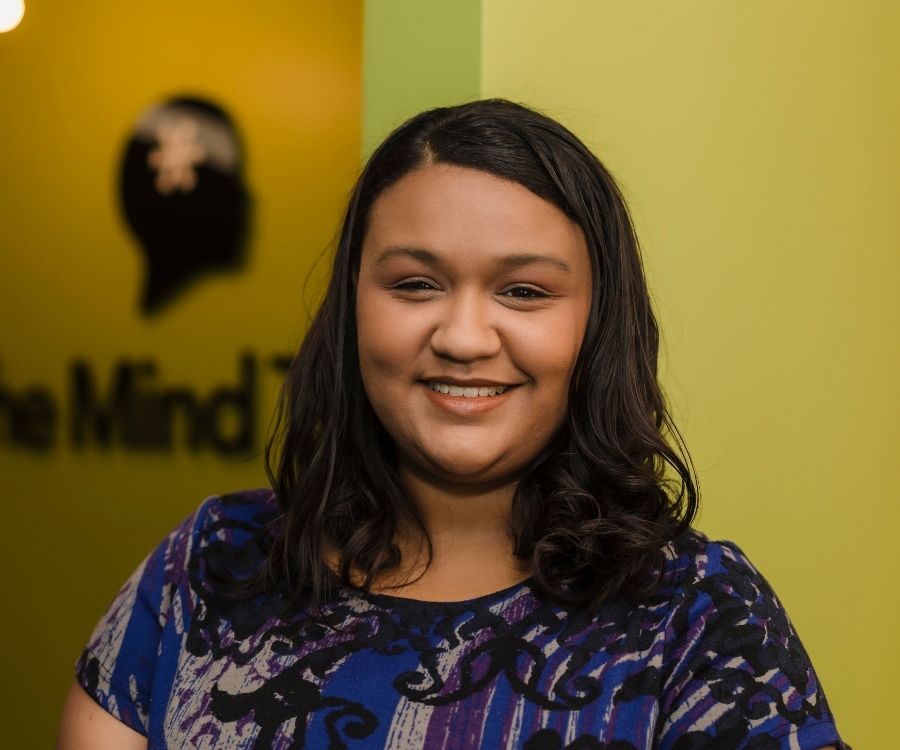Widening Future Possibilities for Students
By Lauren Lopez, The Mind Trust’s Manager of Racial Equity
My identity is complex, multifaceted. Nowadays, I usually tell people I’m mixed race. But growing up was different. I didn’t racially identify as Brown or Black nor did I view myself through a racial lens. The culture in the schools I attended was inclusive, community-focused. Despite the overwhelming presence of whiteness, I was never made to feel different in the circles I occupied in school. This inclusivity made my future feel wide open. Filled with possibility.
I actually noticed socioeconomic differences before racial ones. Growing up in Youngstown, Ohio, class was how kids identified themselves and each other. After the steel mill collapse and the departure of key industries, it felt like most everyone shared an experience of struggle.
Yet that class identity marker only went so far, which is something I realized when I entered the teaching profession. I bore witness to how so many of the students I taught had their socioeconomic concerns dominated or equaled by concerns about their race. I came to understand the deeper roots of the socioeconomic problems that seemed to disproportionately impact communities of color. And more often than not, those concerns cut off numerous possibilities for my students through no fault of their own.
My constant professional aspiration is to widen future possibilities for students. That was true while I was a teacher and it is true now with The Mind Trust as a member of our Leadership and Racial Equity team. When I taught, so many of my students lived in a bubble crafted by society based on their identity. I focused on helping them see beyond that bubble. Which is not to say their bubble wasn’t good enough or valuable. Rather, I wanted to show them it didn’t have to be their entire world. There was more than they knew about – more possibilities beyond the horizon that the world, and even some educators, had worked hard to limit for them.
So many of my students lived in a bubble crafted by society based on their identity… I wanted to show them it didn’t have to be their entire world.
Lauren Lopez
About four or five years into my teaching career, I started to notice this attitude of limiting student possibilities show up in school policies. Put plainly, I found them triggering for how regimented, militaristic, and punitive they were. Middle school students were forced to walk in straight, silent lines from class to class. Divergence from radically restrictive circumstances was met with backlash.
Time for an example. One day I was on playground duty. Two sisters who were in separate classes were both at recess. This was their first time seeing each other all day since getting off the bus. Upon seeing each other, they ran across the playground and hugged, only for another teacher to yell at them, berating them for breaking a rule about no touching between students. While I can understand the root of that policy being grounded in student safety, the inflexibility and lack of nuance denied the full humanity of these two students. They were not allowed any agency. A moment of love and joy was turned into a moment of punishment and fear.
The truth is majority-white schools never implement those policies. The identities of white students don’t seem to force schools to limit them in the same ways our schools so often limit students of color. Another truth is that most of the time, those policies are implemented by white leaders in schools that serve mostly Black and Brown students. Why do white educators often seem to opt for control over students of color with diverse identities instead of building trust, respect, and love?
Students need autonomy and agency just like adults. If my time in the classroom taught me anything, it’s that kids are as emotionally aware as adults are. Sometimes even more so. It was never my job to control students. Rather, my job was to help them understand the learning environment they needed and engage them in a co-creative process of upholding that learning environment alongside a community of worthy scholars.
To better expand possibilities for students, I realized I had to expand possibilities for myself too.
Lauren Lopez
So how does all that translate into why I’m at The Mind Trust and not in a classroom anymore? Being at The Mind Trust means I get to play a role in a systems-level approach to racial equity. I’m no longer limited by the walls of my classroom or those of my school. To better expand possibilities for students, I realized I had to expand possibilities for myself too.
It’s likely obvious that injustice and mistreatment of our children gets me fired up. Some days I want to burn the whole system down because there are too many ways kids are being harmed by the existing education system and progress can feel slow. However, being on this team at The Mind Trust, specifically under Patrick Jones’ leadership, has helped me understand the value in being strategic in pursuit of racial equity.
The all-guns-blazing approach is not always the most productive to the long-term mission. Sure, some moments are made to be loud. Some moments demand an unapologetic approach. On the other hand, some moments need thoughtfulness, quietude, a measure-twice-cut-once ethos.
We have an obligation to our future generations to make things right. That means some things do need to be torn down and rebuilt.
Lauren Lopez
Still, I firmly believe we have an obligation to our future generations to make things right. For me, that means some things do need to be torn down and rebuilt. I dream of that rebuilding, done by a globally-diverse group of folks, with people of all of identities creating a future filled with many kinds of new possibilities. That beautiful vision of an as-yet-unrealized future day is what keeps me going in this work.

